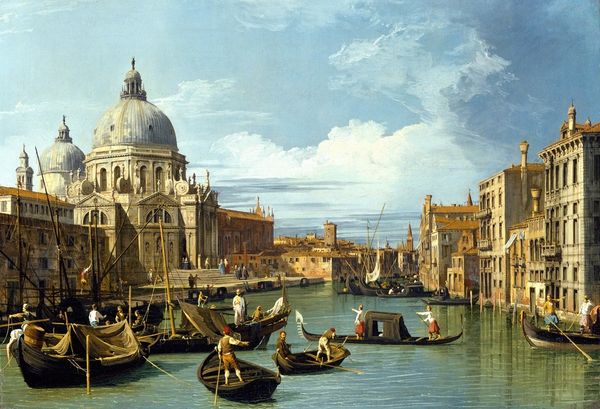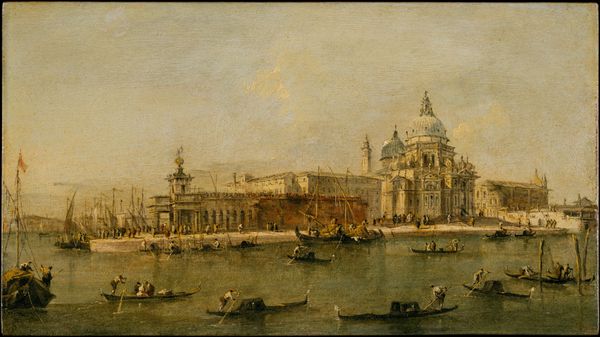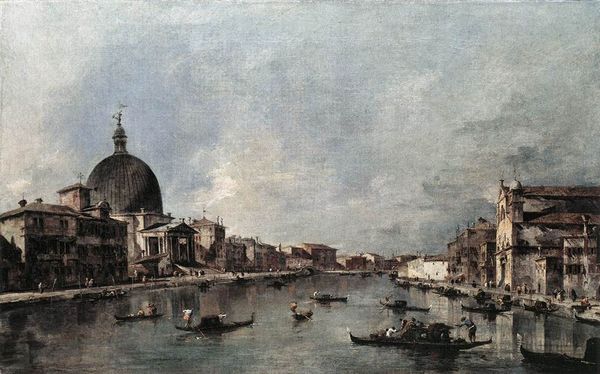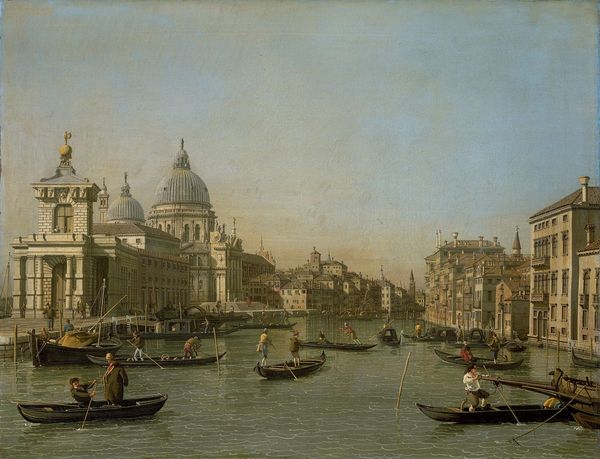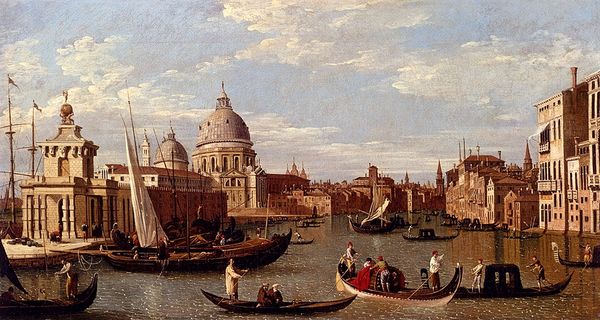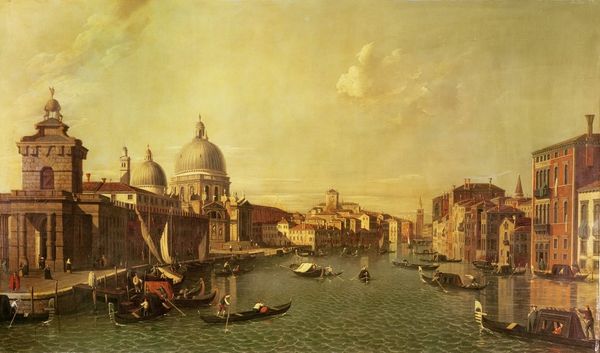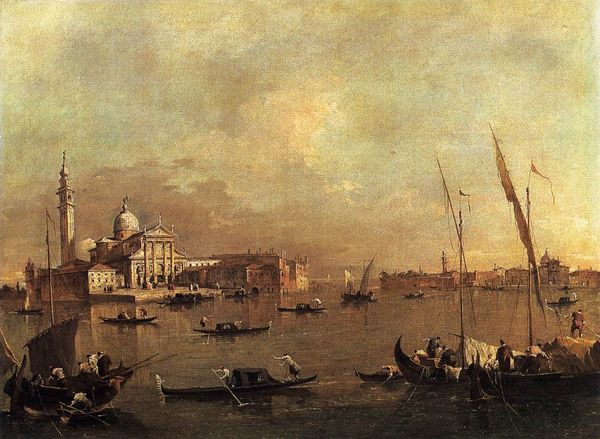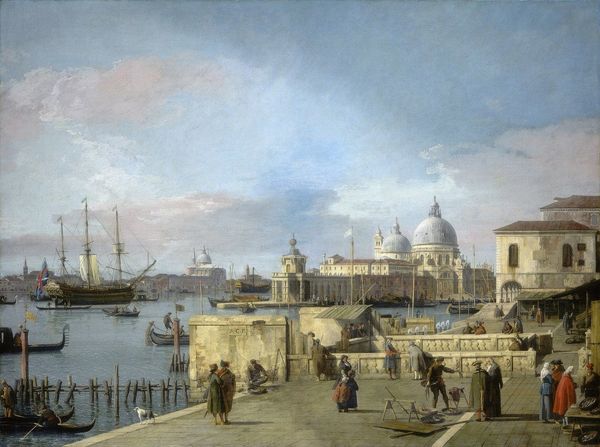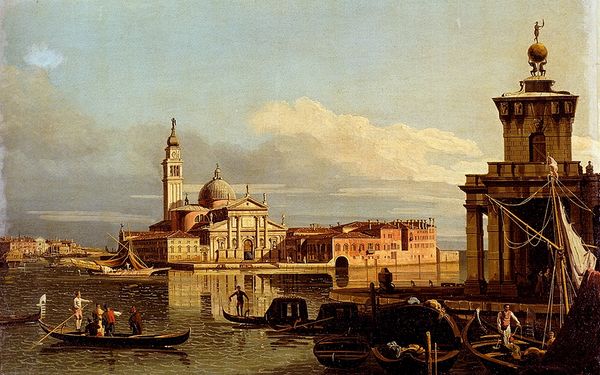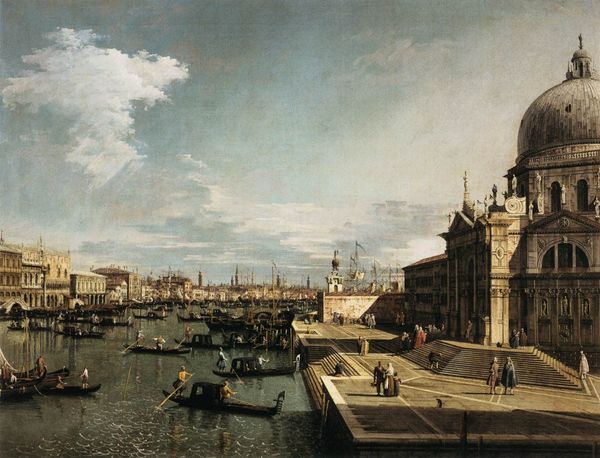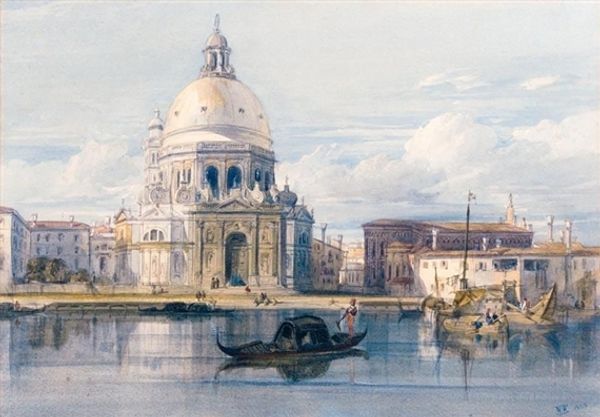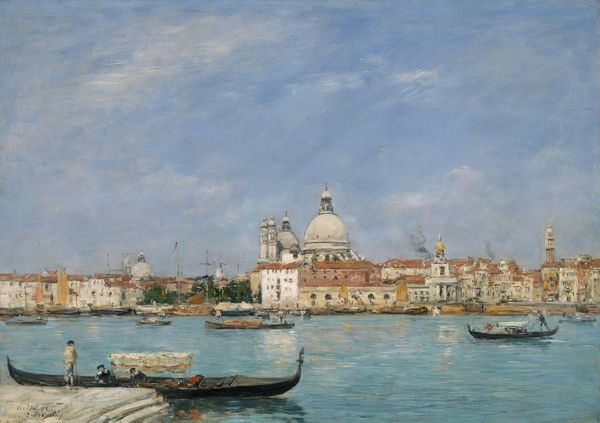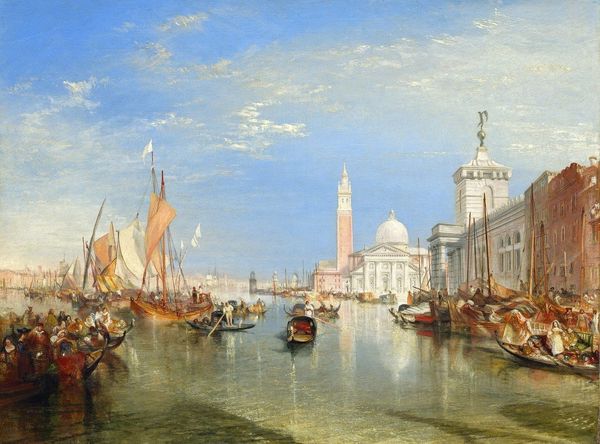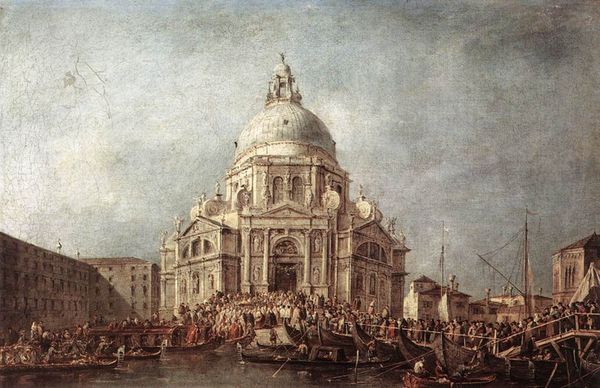
#
abstract painting
#
abandoned
#
landscape
#
possibly oil pastel
#
oil painting
#
derelict
#
acrylic on canvas
#
underpainting
#
painting painterly
#
mixed media
#
watercolor
Copyright: Public Domain: Artvee
Curator: The overall effect is dreamlike, a hazy, shimmering view. I'm struck by the muted tones and the soft, almost blurred edges. Editor: Indeed. We're looking at Francesco Guardi's "Santa Maria della Salute," painted around 1770. Guardi was a master of Venetian vedute, paintings that often served a tourist clientele eager to bring home views of the city. Curator: Tourist art? Surely it's more than mere postcard imagery. The very looseness of the brushwork disrupts any sense of straightforward documentation, opening up space for interpretation, for feelings of longing. What can we say about the context, then? The people here look as if from times long gone! Editor: Precisely. Guardi's work exists within the context of a declining Venetian Republic. Though the city maintained a veneer of its former glory, its economic and political power was waning. Guardi's paintings, especially his later ones, move away from precise realism toward a more atmospheric and, dare I say, melancholic depiction. Venice, as the symbol, was struggling, even back then. Curator: Melancholic, yes, a nostalgia that isn't necessarily for the Venice that existed but for an idealized, almost mythic version. It anticipates future desires and longings! I wonder what would gender and queer theory make of this! Are there ways of seeing the feminization of the Venetian city? What else can we draw from these views? Editor: It’s compelling to think of these paintings as constructed realities designed for a particular audience—the Grand Tourists, predominantly wealthy, white, European men—shaping perceptions of Venice, also within the framework of 18th century socio-economics that was ripe with issues for marginalised communities. Guardi's paintings participated in a kind of visual economy. Curator: A constructed reality marketed through art! His seemingly spontaneous brushwork, is thus, strategic and, as it were, well thought. That sense of dreamy impressionism, almost ahead of its time, functions to both seduce and, subtly, perhaps, hint at the underlying fragility. The very quick touches signal that life flows away quicker than one might think. Editor: I agree entirely. And thinking about the reception of these paintings in the context of the Venetian Republic's decline helps us see beyond the surface beauty and consider the complex relationship between art, politics, and societal change. His approach created something novel.
Comments
No comments
Be the first to comment and join the conversation on the ultimate creative platform.
